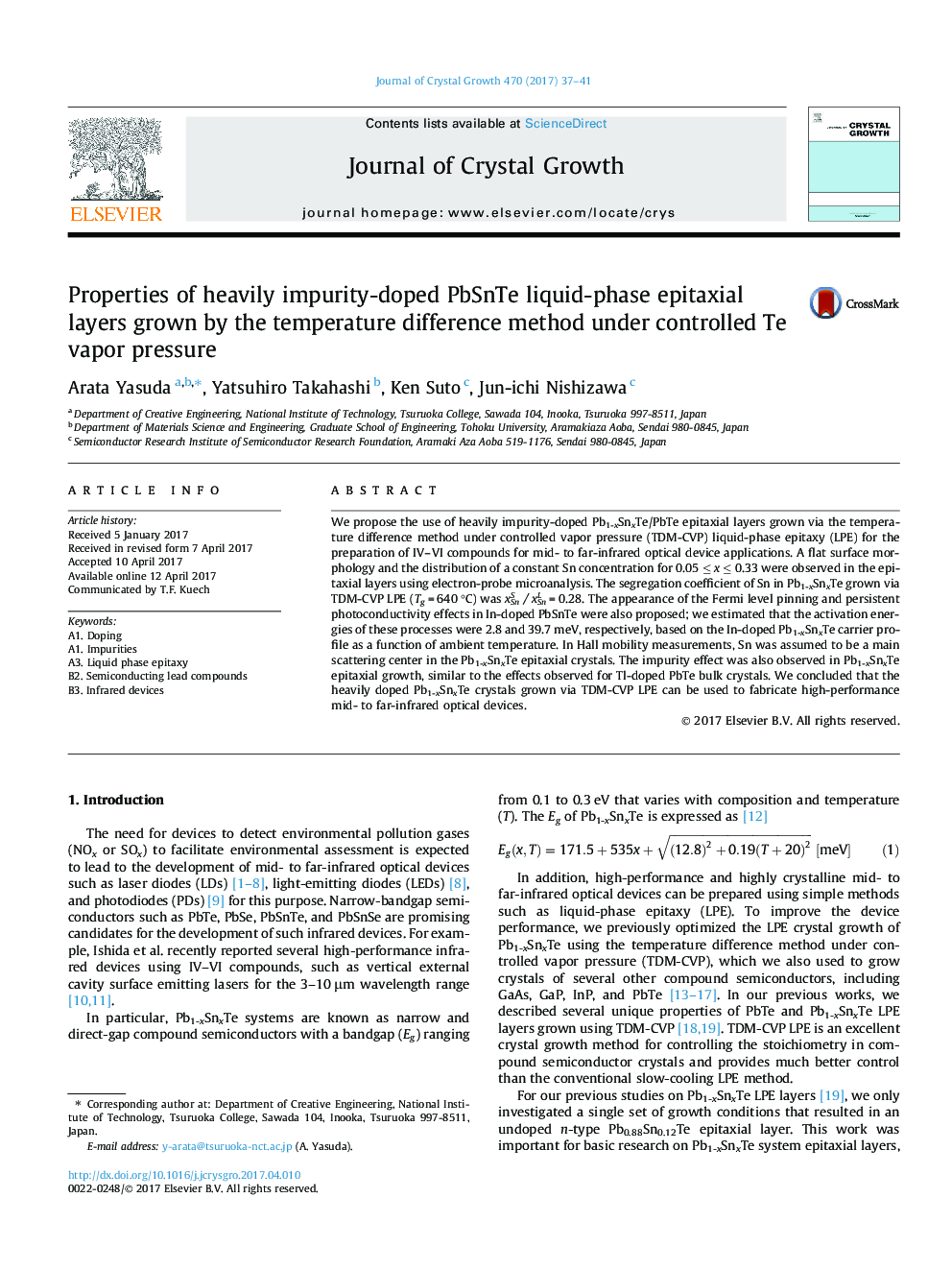| Article ID | Journal | Published Year | Pages | File Type |
|---|---|---|---|---|
| 5489387 | Journal of Crystal Growth | 2017 | 5 Pages |
Abstract
We propose the use of heavily impurity-doped Pb1-xSnxTe/PbTe epitaxial layers grown via the temperature difference method under controlled vapor pressure (TDM-CVP) liquid-phase epitaxy (LPE) for the preparation of IV-VI compounds for mid- to far-infrared optical device applications. A flat surface morphology and the distribution of a constant Sn concentration for 0.05 â¤Â x â¤Â 0.33 were observed in the epitaxial layers using electron-probe microanalysis. The segregation coefficient of Sn in Pb1-xSnxTe grown via TDM-CVP LPE (Tg = 640 °C) was xSSnï¼xLSn = 0.28. The appearance of the Fermi level pinning and persistent photoconductivity effects in In-doped PbSnTe were also proposed; we estimated that the activation energies of these processes were 2.8 and 39.7 meV, respectively, based on the In-doped Pb1-xSnxTe carrier profile as a function of ambient temperature. In Hall mobility measurements, Sn was assumed to be a main scattering center in the Pb1-xSnxTe epitaxial crystals. The impurity effect was also observed in Pb1-xSnxTe epitaxial growth, similar to the effects observed for Tl-doped PbTe bulk crystals. We concluded that the heavily doped Pb1-xSnxTe crystals grown via TDM-CVP LPE can be used to fabricate high-performance mid- to far-infrared optical devices.
Keywords
Related Topics
Physical Sciences and Engineering
Physics and Astronomy
Condensed Matter Physics
Authors
Arata Yasuda, Yatsuhiro Takahashi, Ken Suto, Jun-ichi Nishizawa,
